To explain the structure of ai agent is to understand how artificial intelligence interacts and makes decisions within its environment. This article will delve into the fundamental components and common architectures, clarifying how an AI agent operates and learns to perform tasks effectively, which is key for anyone looking to grasp AI functionalities.
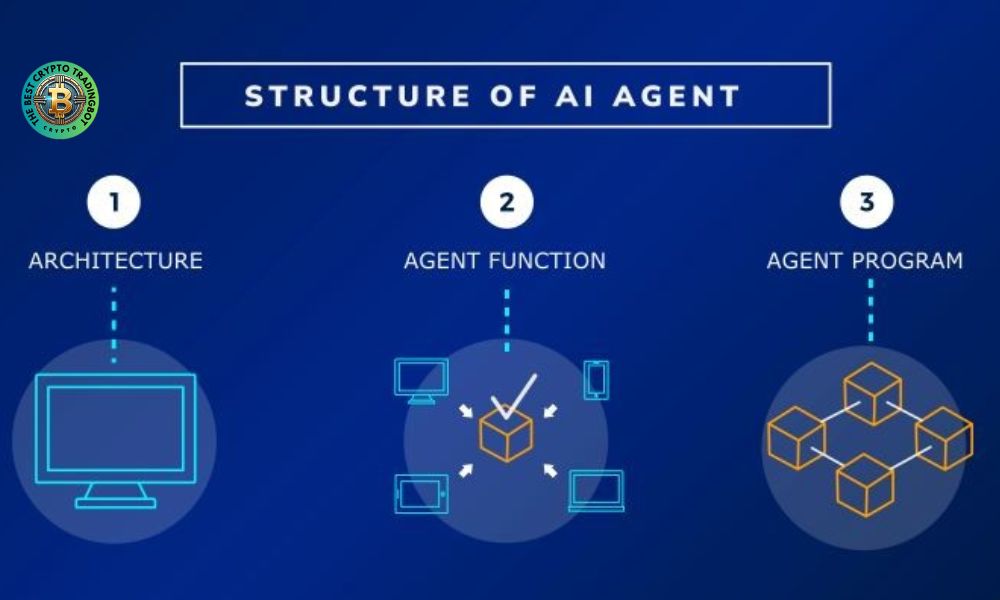
Contents
The core components in the structure of AI agent
Regardless of type or complexity, most AI agents share some basic structural components. When we explain the structure of ai agent, these elements are always central to the discussion:
Sensors: These are the agent’s “senses,” allowing it to gather data about the current state of its environment. Examples include cameras (capturing images), microphones (capturing sound), temperature sensors, GPS, tactile sensors, and so on. The collected data, often raw and needing processing, is referred to as “percepts.” The quality and type of sensors heavily influence an agent’s ability to understand its surroundings.
Actuators: These are the agent’s “limbs” or mechanisms for interaction, enabling it to exert influence and change the environment. Examples include motors for movement, robotic arms for manipulation, display screens for information output, and speakers for auditory communication. The actions performed by actuators are the direct result of the agent’s decision-making process.
Agent program / Agent function: This is the “brain” or the intelligent core of the agent; it’s the most critical aspect when we explain the structure of ai agent. It receives the current percepts (and often a history of percepts) from the sensors as input and decides which actions should be performed by the actuators. The agent function essentially maps a sequence of percepts to an action. The sophistication of this program, ranging from simple rule-based systems to complex machine learning models, largely defines the agent’s capabilities and intelligence.
The interaction is a continuous loop: sensors perceive, the agent program decides, and actuators act, thereby changing the environment, which in turn leads to new percepts. The efficiency and effectiveness of this loop are central to the agent’s performance.
Explain the structure of AI agent through common types
Based on how the agent program is designed and operates, and how it utilizes percepts and internal knowledge, there are various types of agent architectures. Each type offers a different way to explain the structure of ai agent and its decision-making process.
Simple reflex agents:
- Structure: This type of agent operates based on pre-defined “condition-action” rules (e.g., if-then statements). It only reacts to the current percept, without considering the history of percepts or maintaining an internal state of the world. To explain the structure of ai agent of this kind is to focus on its direct stimulus-response mechanism.
- Operation: When a specific condition in the environment is detected by its sensors, the agent triggers a corresponding pre-programmed action. For example, if a vacuum cleaning robot’s bump sensor (condition) is activated, it will immediately execute an action like stopping and turning.
- Limitations: Their applicability is limited to fully observable environments where the correct action can be determined solely from the current percept. They cannot handle situations requiring memory or understanding of past events and can easily get stuck in loops. This limitation is clear when we explain the structure of ai agent of this type, highlighting why more complex structures are often needed for sophisticated tasks.
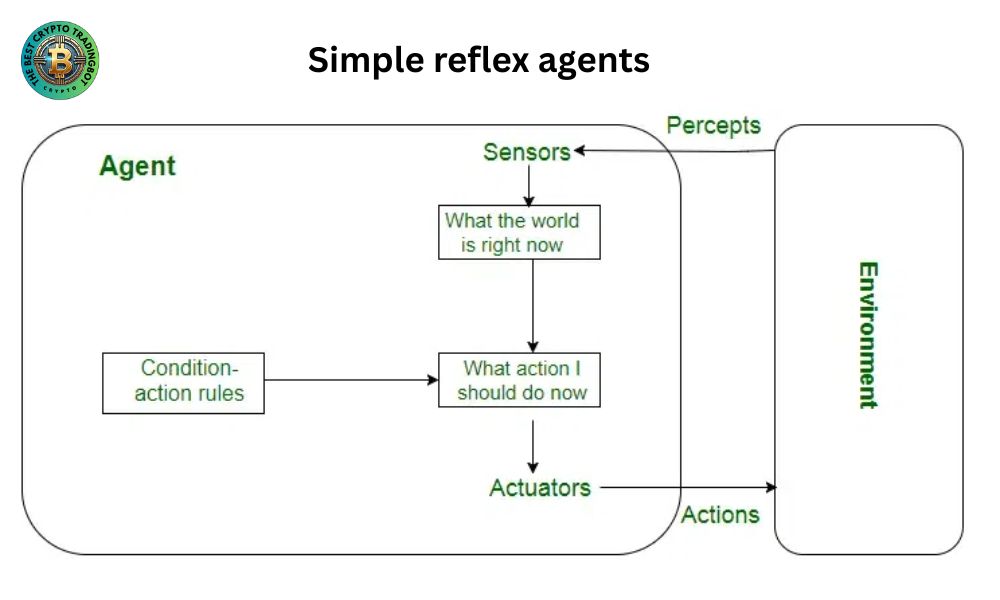
Model-based reflex agents:
- Structure: This agent maintains an internal “model” or representation of the world’s state. This model is updated based on the history of percepts and knowledge of how the world changes over time (e.g., how its own actions affect the world, or how other processes evolve). This internal model is a key feature when we explain the structure of ai agent that can handle partial observability.
- Operation: The agent uses this model to understand aspects of the environment that cannot be directly observed at the current moment. This allows it to make more informed decisions in partially observable environments. For instance, a self-driving car needs a model to track the positions and predict movements of other vehicles, even if they are temporarily obscured from its sensors.
- Advantages: More flexible and effective than simple reflex agents in environments that are not fully observable.
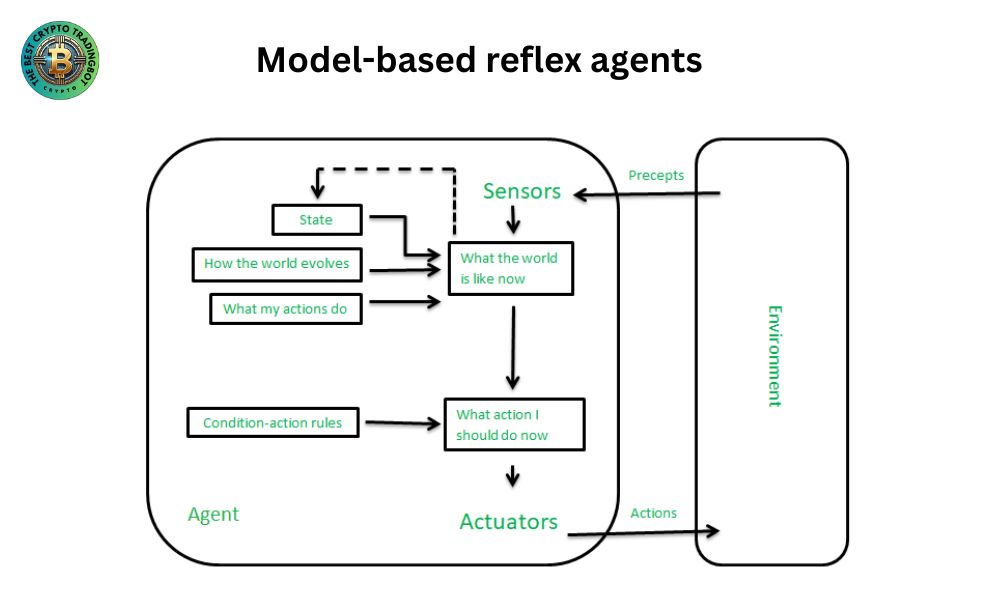
Goal-based agents:
- Structure: In addition to a world model, this agent has information about “goals” – desirable situations or states it aims to achieve. The pursuit of these goals is fundamental if we are to explain the structure of ai agent that exhibits purposeful, rather than purely reactive, behavior.
- Operation: The agent chooses actions that it believes will lead to achieving its goals. This often involves search algorithms (e.g., A* search) and planning techniques to find a sequence of actions to reach a goal state. For example, a GPS navigation system finds a route (a sequence of turns and road segments) to a specified destination (goal).
- Advantages: Capable of making long-term, purposeful decisions and exhibiting more flexible behavior as it can adapt its plans if the environment changes or initial plans fail.
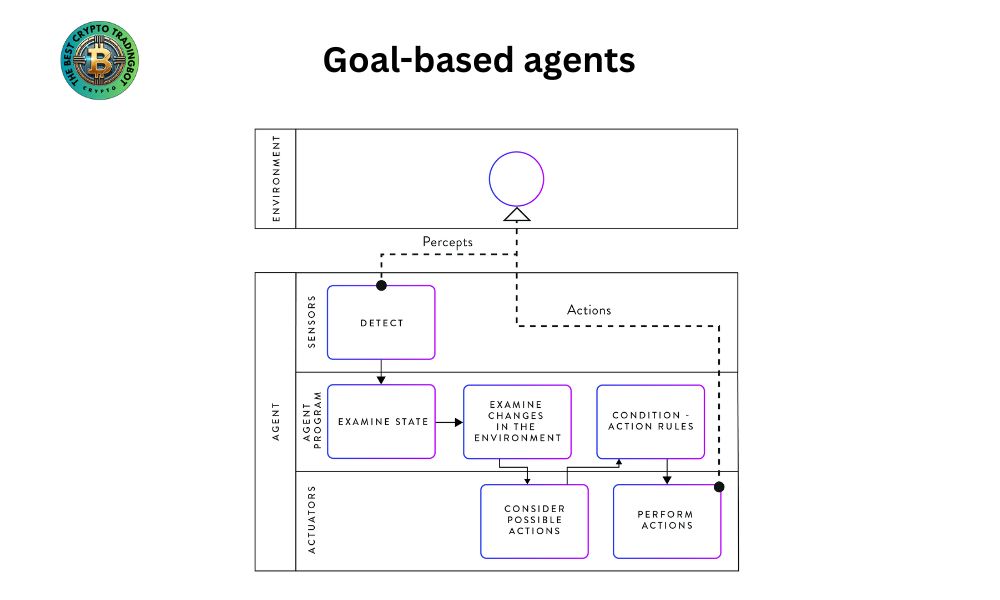
Utility-based agents:
- Structure: When there are multiple ways to achieve a goal, or when goals might conflict, or when there’s uncertainty about outcomes, a utility-based agent will choose the action that maximizes its “utility function.” This function provides a quantitative measure of the agent’s “happiness,” “satisfaction,” or preference for a particular state or outcome. Understanding this function is vital to explain the structure of ai agent designed for optimal decision-making in complex scenarios.
- Operation: The agent evaluates the expected utility of the possible outcome states for each potential action and selects the action leading to the state with the highest expected utility. This is particularly important in situations involving uncertainty and trade-offs. For example, a stock trading robot might choose investments that offer the highest expected return balanced against an acceptable level of risk, using a utility function to quantify this balance.
- Advantages: Enables rational decision-making in complex and uncertain situations where goals alone are insufficient to specify the best course of action.
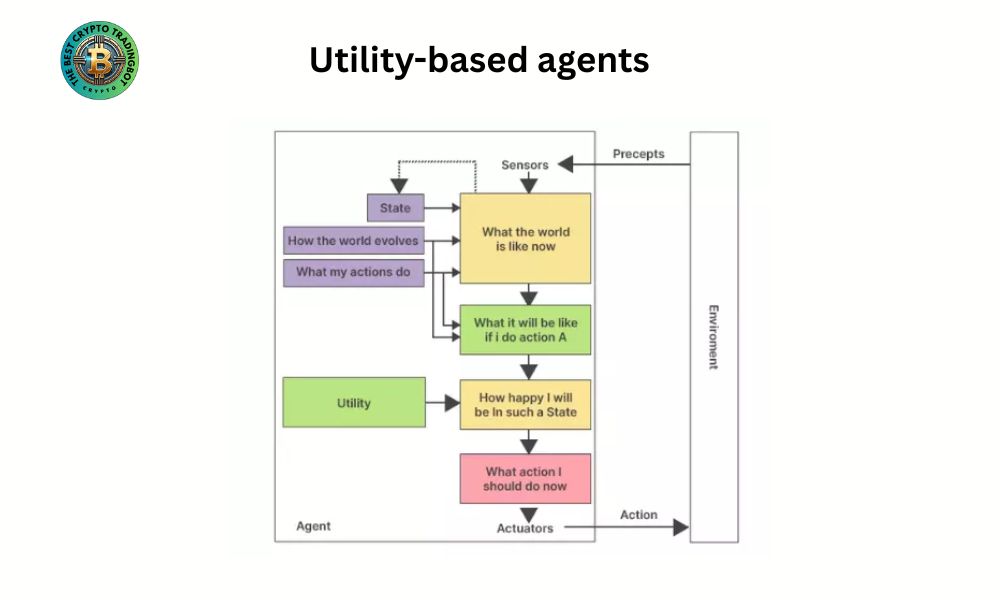
Learning agents:
Structure: This type of agent is designed to improve its performance over time through experience. It consists of four main conceptual components, all of which are crucial when we explain the structure of ai agent capable of adaptation and autonomous improvement:
- Learning element: Responsible for making improvements to the agent’s knowledge or performance capabilities.
Performance element: This is the part that selects external actions, essentially embodying one of the agent types described above (e.g., model-based or utility-based). - Critic: Evaluates the agent’s performance based on a fixed standard or feedback from the environment and provides this feedback to the learning element.
- Problem generator: Suggests exploratory actions or subgoals that can lead to new and informative experiences, helping the agent learn in areas it might not otherwise encounter.
Operation: The learning agent acts, receives feedback from the critic on how well it’s doing, and the learning element uses this feedback to modify the performance element for future actions. Consider a spam filter: initially, its performance element might misclassify emails. The critic (perhaps user feedback) identifies errors. The learning element then adjusts the performance element’s parameters (e.g., word weightings) to reduce future errors. This iterative process is key when we try to fully explain the structure of ai agent that learns.
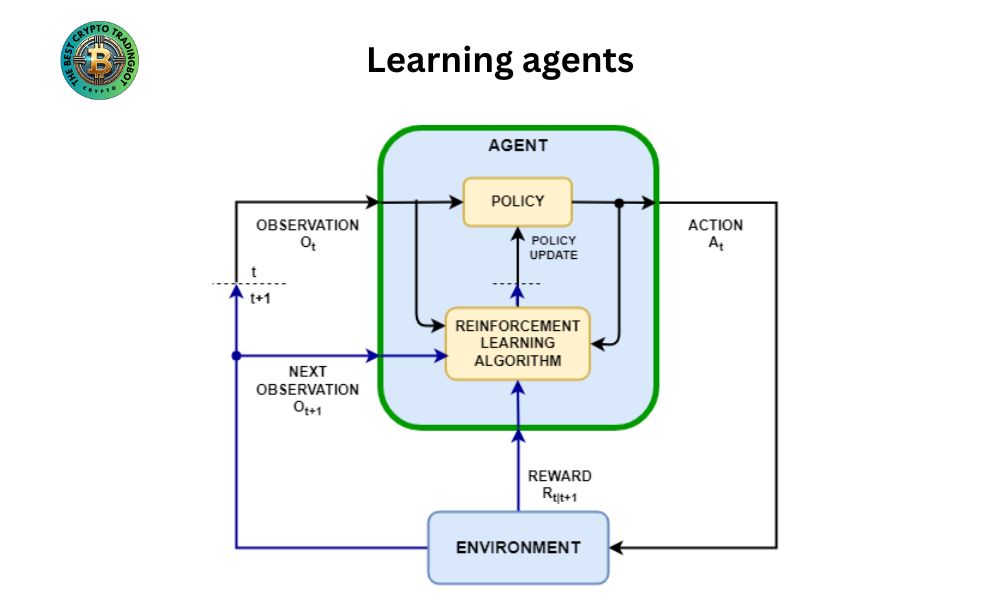
Understanding how to explain the structure of ai agent is not only important for AI researchers and developers but also useful for anyone who wants to learn more about the technology shaping our future. Each agent architecture has its own strengths and weaknesses, making it suitable for different types of tasks and environments. The ongoing development of increasingly complex and intelligent agent architectures continues to expand the horizons of artificial intelligence applications.
Understanding how to explain the structure of ai agent is key to unlocking the potential of artificial intelligence. From simple reactive systems to sophisticated learning architectures, each type plays a distinct role in how AI solves problems. Keep following The Best Crypto TradingBot for more exciting insights into AI and technology!
